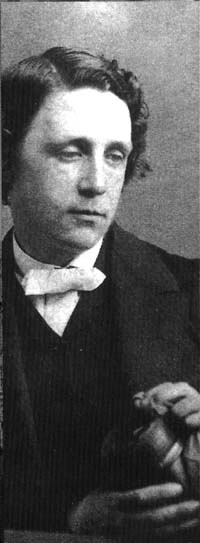Review
|
OXFORD:
A cultural and literary companion |
Available
from
Signal Books, 9, Park End St Oxford, OX1 1HH Tel: 01865 201562 |
|
|
Part architectural and historical guide, part compendium of literary anecdotes, the Cities of the Imagination series is designed to amuse the armchair traveller or local idler, not to inform the hard-nosed tourist. Oxford fits in beautifully with this approach, being, as Horan says, “a city of fictions”, and the overwhelming impression on the reader is that this is a city, and a University, populated by ghosts. Each chapter belongs to a character from Oxford’s past, ranging from “that lovely spiritual apparition, Cardinal Newman” to “the unctous paedophile” Charles Dodgson (Lewis Carroll). The book opens with the tale of medieval nun Frideswide, whom God helped protect from a lustful prince howling at the city gates, thus initiating Oxford’s passionate relationship with the Christian Church. It was here that Archbishop Cranmer, who kickstarted the English Reformation, was burnt at the stake by Queen Mary, and where Charles the First and his popish friends hoped to found their alternative, godly capital during the English Civil War. Matthew Arnold claimed Oxford was “the home of lost causes and forsaken beliefs” and Oscar Wilde was delighted to find that “here the realities of sordid life are kept at a distance”. As the author makes clear, the city remains steeped in this romantic vision of a lost past. Oxford’s promise of magic, of a ‘charmed circle’ has attracted a lot of arrivistes as well as bright sparks to Oxford, including the grotesque Robert Maxwell, pathological liar Jeffrey Archer and Bill Clinton (who, incidentally, lived off the old Gropecunt Lane.) The fact remains that it is easy to be underwhelmed by a place which promises so much glamour: Richard Ingrams, the founder of Private Eye, was shocked to discover “just a lot of men in duffel coats wandering up and down the High Street”. This is a judgement which the author, with his obvious admiration and affection for the city, tries to redress. Nevertheless, today it is hard to imagine discovering God in Headington, as C.S.Lewis did in 1929, without psycho-chemical assistance. Although most of the book focuses on the University and its dons, there are some well-informed sections on surrounding neighbourhoods, including Jericho ( the district of ‘Beersherba’ in Hardy’s Jude the Obscure) and the Cowley Road (acutely described by Michael Dibdin as “South London without the glamour”). The author often complains about the city’s encroaching poor, unwittingly pointing up the fact that Oxford is essentially schizophrenic territory, unable to integrate its seedier side with its long-cherished privileges. Horan has produced an intelligent and elegantly written portrait of the city, full of lively characterisation and historical detail. If you’re going further afield it’s also worth looking out for the other titles in the series: Rome, Venice, Edinburgh, Madrid, Kingston and Mexico-City. Katie Joice 10.6.00 |
 |